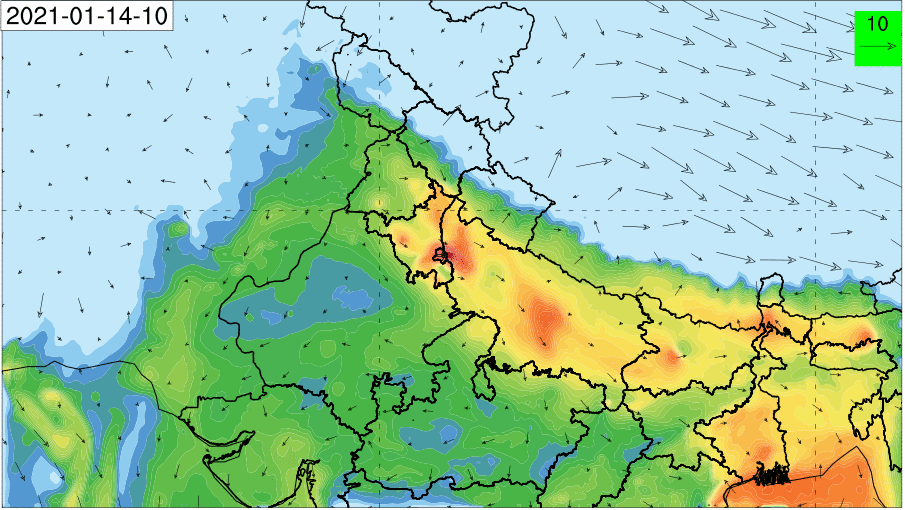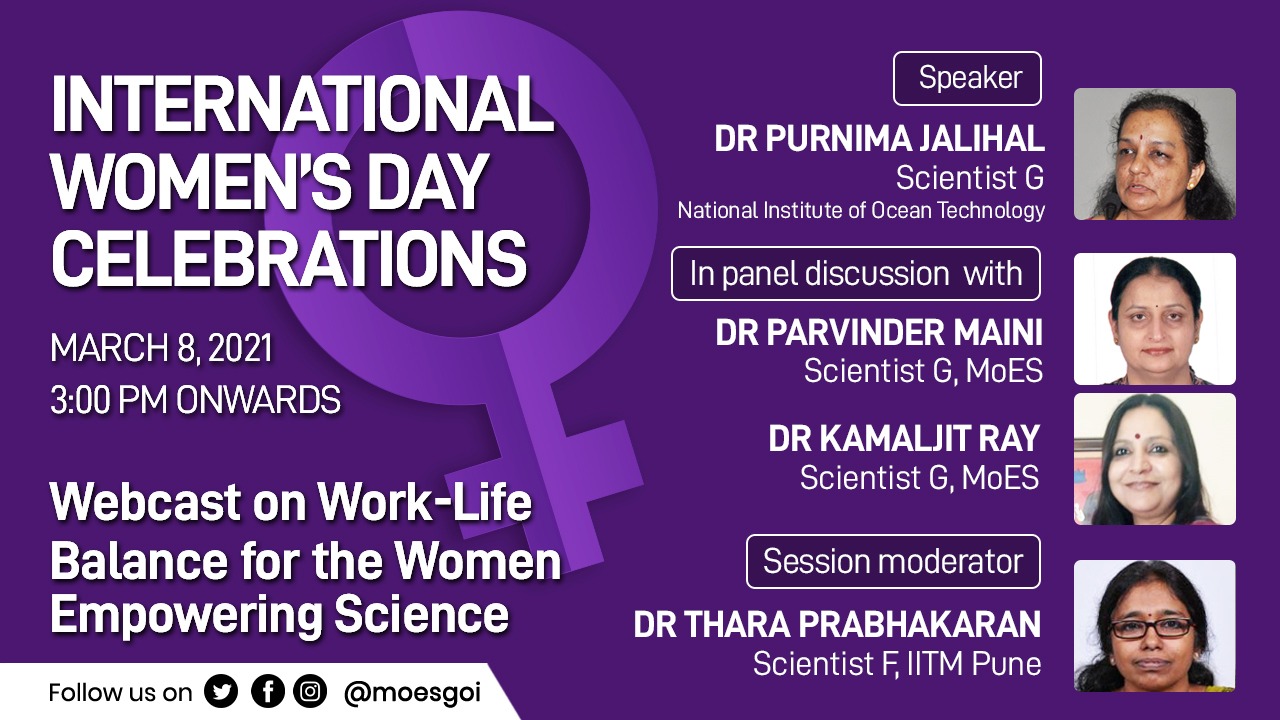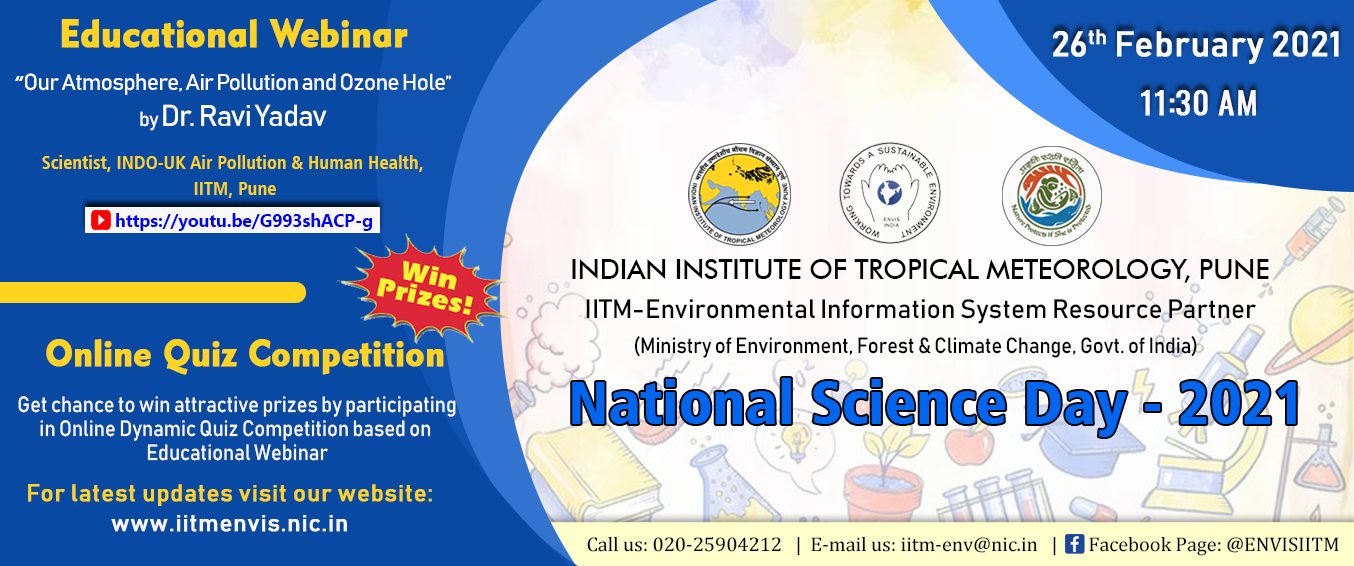RAC Poster Session
Seminars / Lectures
IITM Publication Highlights
Performance of high resolution (400 m) PM2.5 forecast over Delhi
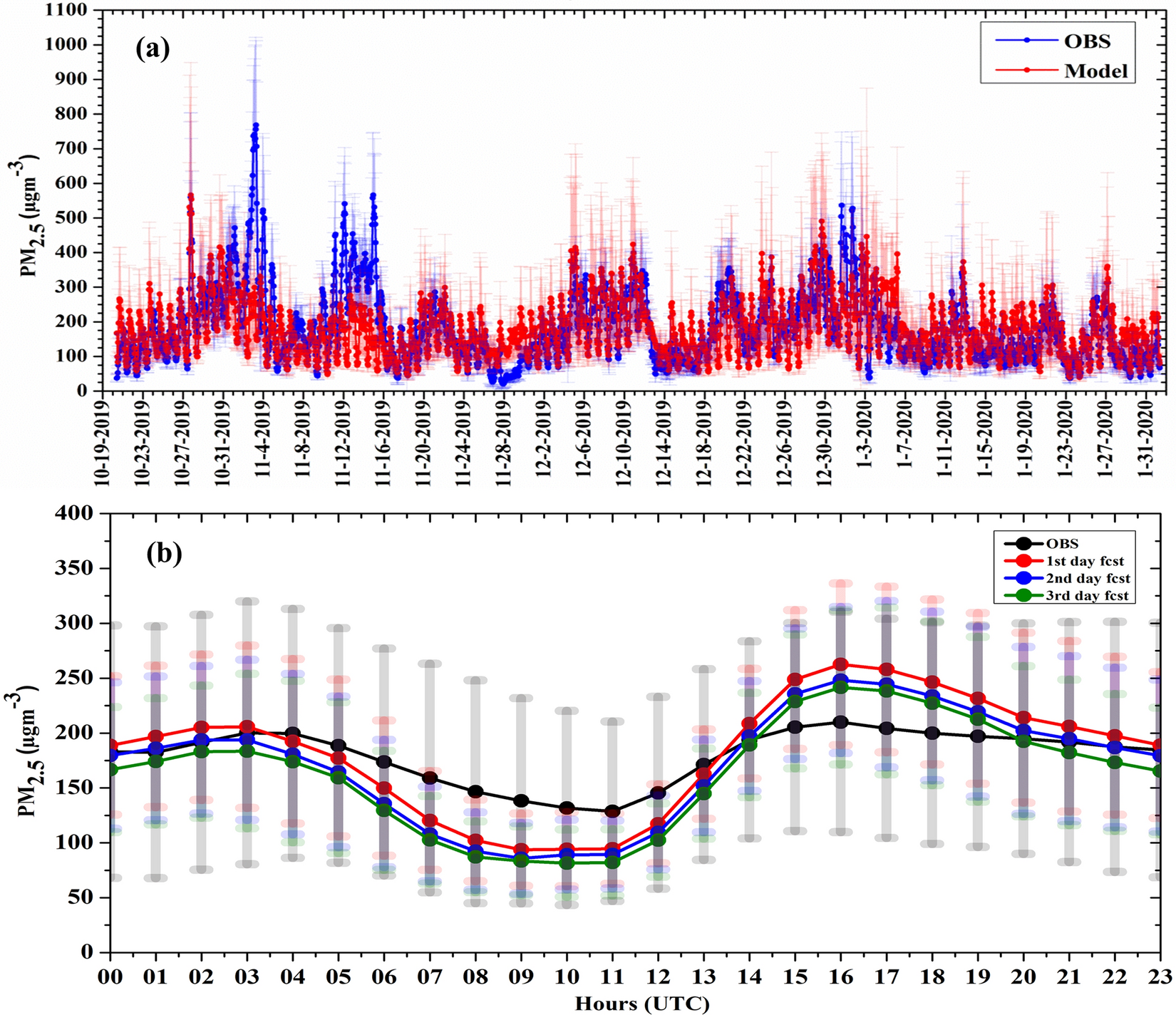 This study reports a very high-resolution (400 m grid-spacing) operational air quality forecasting system developed to alert residents of Delhi and the National Capital Region (NCR) about forthcoming acute air pollution episodes.
This study reports a very high-resolution (400 m grid-spacing) operational air quality forecasting system developed to alert residents of Delhi and the National Capital Region (NCR) about forthcoming acute air pollution episodes.
The forecast found to be very skillful both for PM2.5 concentration and unhealthy/ very unhealthy air quality index categories, and has been helping the decision-makers in Delhi make informed decisions.
(Jena C., Ghude S.D., Kumar Rajesh, Debnath S., Govardhan G., Soni V.K., Kulkarni S.H., Beig G., Nanjundiah R.S., Rajeevan M., Scientific Reports, 11: 4104, February 2021, DOI:10.1038/s41598-021-83467-8, 1-9)
Association of retreating monsoon and extreme air pollution in a megacity
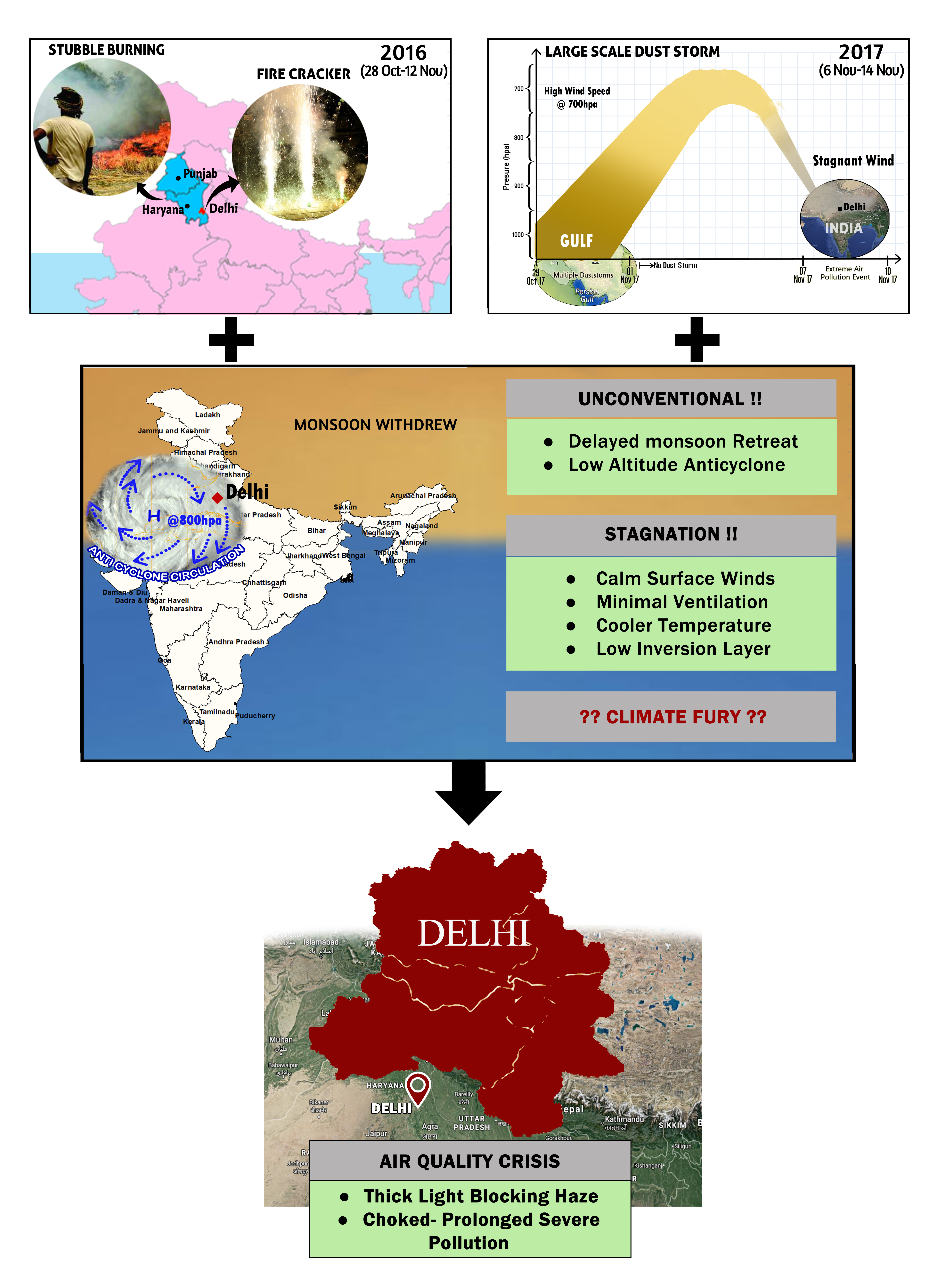 Paper presents a hypothesis that the Asian summer monsoon dynamics of delayed withdrawal time and associated vagarious anti-cyclonic circulation plays a lead role in enhancing the frequency of extreme pollution events by triggering rapid particulate formation and trapping them ceaselessly.
Paper presents a hypothesis that the Asian summer monsoon dynamics of delayed withdrawal time and associated vagarious anti-cyclonic circulation plays a lead role in enhancing the frequency of extreme pollution events by triggering rapid particulate formation and trapping them ceaselessly.
SAFAR-forecasting model explains that how stagnation conditions created by changing circulation pattern in late withdrawal years of 2016 and 2017 in Delhi during the past 5 years witnessed PM2.5 extremes immediately after the monsoon retreat.
Present findings suggest that such unusual monsoon patterns are on the hook to spur extreme pollution events in recent time.
(Beig G., Rathod Aditi, Tikle S., Maji Sujit, Sobhana S.B., Journal of Environmental Sciences, 106, August 2021, DOI:0.1016/j.jes.2021.01.004, 97-104)
First results from the Doppler Weather Radar observations over Mumbai urban region during the inter seasonal phases of 2018 monsoon
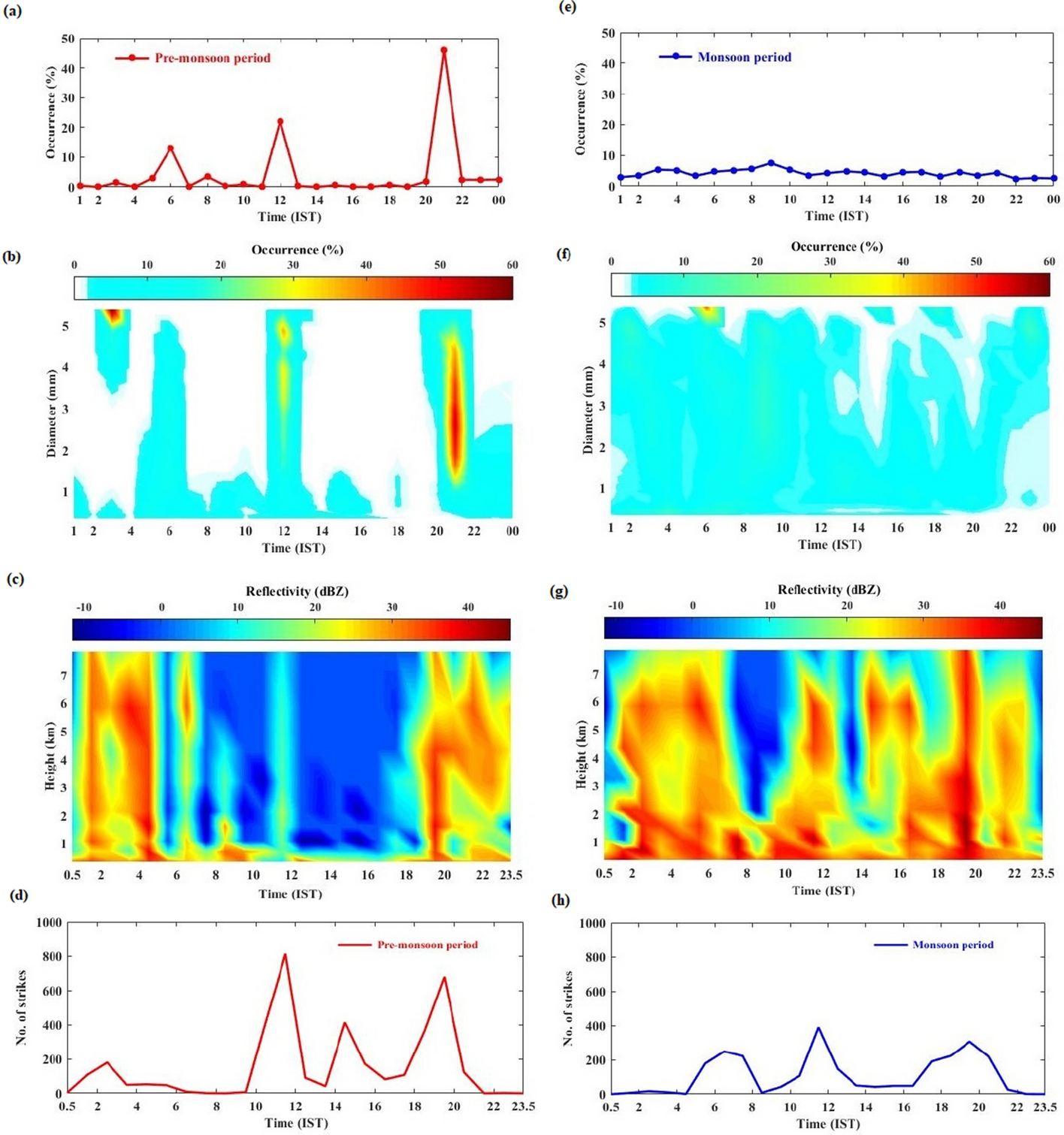 First of its kind, this study clearly portrays inter-seasonal relationship between morphology of clouds, microphysics of precipitation& occurrences of lightning by synergetic use of data from S-band DWR, Disdrometer & Maharashtra Lightning Detection Network Mumbai. Findings & observations will be helpful to aid heavy rainfall research over urban coastal cities, particularly in the Indian monsoon regions, to advance science in the benefit of the society - which is also one of the important objectives of MoES.
First of its kind, this study clearly portrays inter-seasonal relationship between morphology of clouds, microphysics of precipitation& occurrences of lightning by synergetic use of data from S-band DWR, Disdrometer & Maharashtra Lightning Detection Network Mumbai. Findings & observations will be helpful to aid heavy rainfall research over urban coastal cities, particularly in the Indian monsoon regions, to advance science in the benefit of the society - which is also one of the important objectives of MoES.
(Chakravarty K., Gayathridevi S., Mohmmad J., Hosalikar K.S., Pandithurai G., Niyogi D., Natural Hazards, Online, March 2021, DOI:10.1007/s11069-021-04637-5, 1-14)
How secondary inorganic aerosols from Delhi influence aerosol optical and radiative properties at a downwind sub-urban site over Indo-Gangetic Basin?
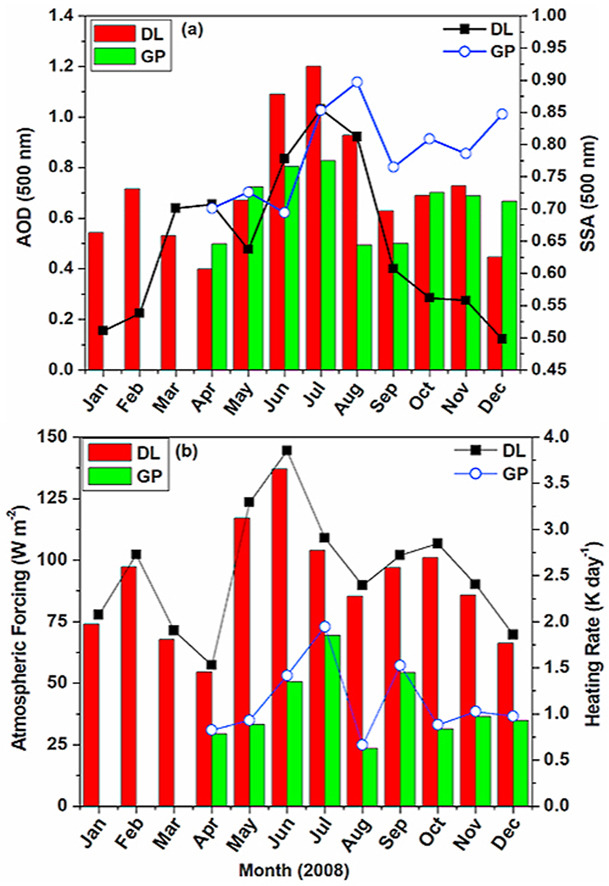 This study investigated the characteristics of secondary inorganic aerosols at a highly polluted urban environment of Delhi, and their impacts at a downwind semi-urban site, Gual Pahari, in the north-west IGB. The major water-soluble inorganic species were abundant at Gual Pahari as compared to Delhi whereas the major crustal species were abundant at Delhi as compared to Gual Pahari, which results a two-fold increase in atmospheric warming at Delhi due to dominant absorbing aerosols. The results highlight the diverse near-surface emissions together with atmospheric processing, which leads to strong inter-seasonal spatial heterogeneity in aerosol chemical, optical and radiative properties between the adjacent distinct sites, and has important implication for a city-scale air pollution modeling.
This study investigated the characteristics of secondary inorganic aerosols at a highly polluted urban environment of Delhi, and their impacts at a downwind semi-urban site, Gual Pahari, in the north-west IGB. The major water-soluble inorganic species were abundant at Gual Pahari as compared to Delhi whereas the major crustal species were abundant at Delhi as compared to Gual Pahari, which results a two-fold increase in atmospheric warming at Delhi due to dominant absorbing aerosols. The results highlight the diverse near-surface emissions together with atmospheric processing, which leads to strong inter-seasonal spatial heterogeneity in aerosol chemical, optical and radiative properties between the adjacent distinct sites, and has important implication for a city-scale air pollution modeling.
(Srivastava Atul K., Thomas A., Hooda R.K., Kanawade V.P., Hyvärinen A.-P., Bisht D.S., Tiwari Suresh, Atmospheric Environment, 248: 118246, March 2021, DOI:10.1016/j.atmosenv.2021.118246, 1-10)
Droplet spectral dispersion by lateral mixing process in continental deep cumulus clouds
 This study aims to discuss the process of spectral dispersion by the entrainment-mixing mechanisms. The entrainment of dry environmental air occurs at the lateral edges of convective clouds at a length scale of about 100–200 m, as reported in previous studies.
This study aims to discuss the process of spectral dispersion by the entrainment-mixing mechanisms. The entrainment of dry environmental air occurs at the lateral edges of convective clouds at a length scale of about 100–200 m, as reported in previous studies.
(Bera S., Journal of Atmospheric and Solar Terrestrial Physics, 214: 105550, March 2021, DOI:10.1016/j.jastp.2021.105550, 1-9)
New Publications

Evaluating different lightning parameterization schemes to simulate lightning flash counts over Maharashtra, India
Mohan G.M., Vani K.G., Hazra A., Mallick C., Chaudhari H.S., Pokhrel S., Pawar S.D., Konwar M., Saha Subodh K., Das S.K., Deshpande S., Ghude S., Barth M.C., Rao Suryachandra A., Nanjundiah R.S., Rajeevan M., Atmospheric Research, 255: 105532, June 2021, DOI:10.1016/j.atmosres.2021.105532, 1-22

Atmospheric ice nucleating particle measurements and parameterization representative for Indian region
Anil Kumar V., Hazra A., Pandithurai G., Kulkarni G., Mohan G.M., Mukherjee Subrata, Leena P.P., Patil R.D., Prasad D.S.V.V.D., Atmospheric Research, 253: 105487, May 2021, DOI:10.1016/j.atmosres.2021.105487, 1-9
PDF Publisher Link
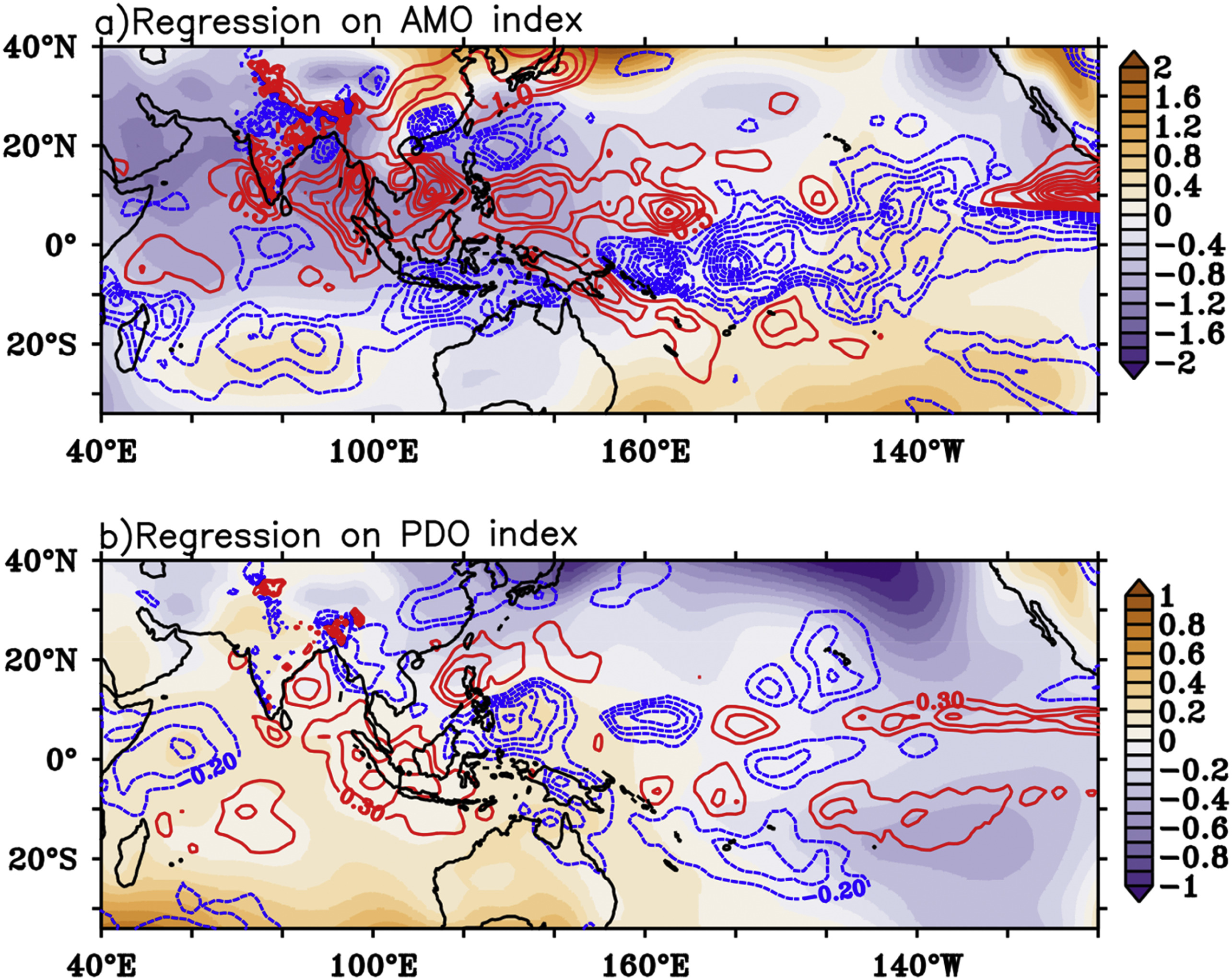
The decadal sea level variability observed in the Indian Ocean tide gauge records and its association with global climate modes
Deepa J.S., Gnanaseelan C., Global and Planetary Change, 198: 103427, March 2021, DOI:10.1016/j.gloplacha.2021.103427, 1-13
PDF Publisher Link
IITM Events
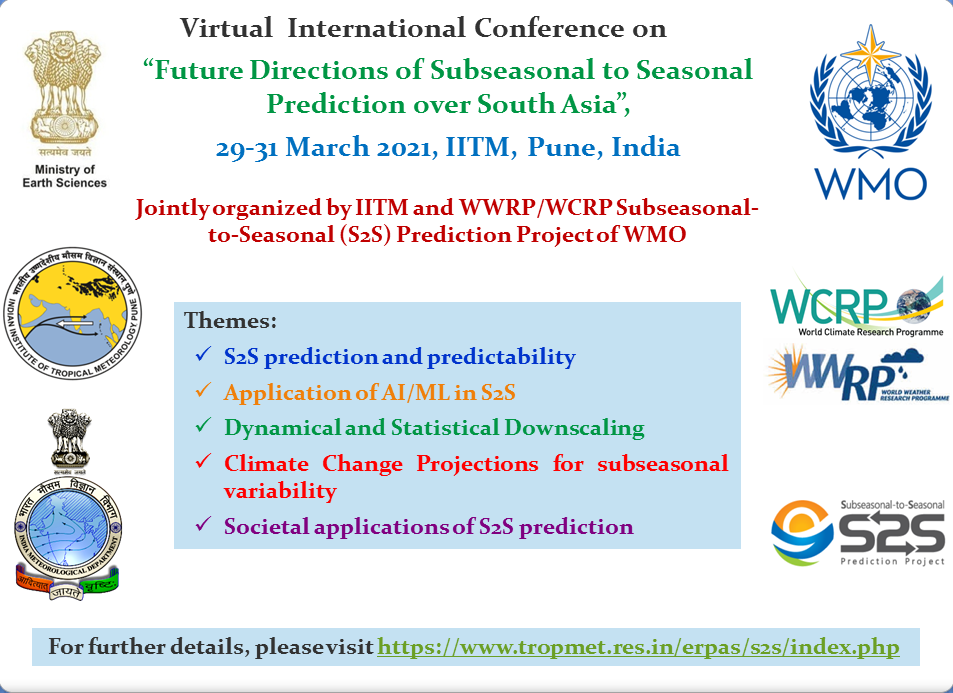
Virtual International Conference on the “Future directions of Subseasonal to Seasonal Prediction over South Asia”
IITM, Pune and the WWRP/WCRP Subseasonal-to-Seasonal (S2S) Prediction Project are jointly organizing a Virtual International Conference on the "Future directions of Subseasonal to Seasonal Prediction over South Asia".


